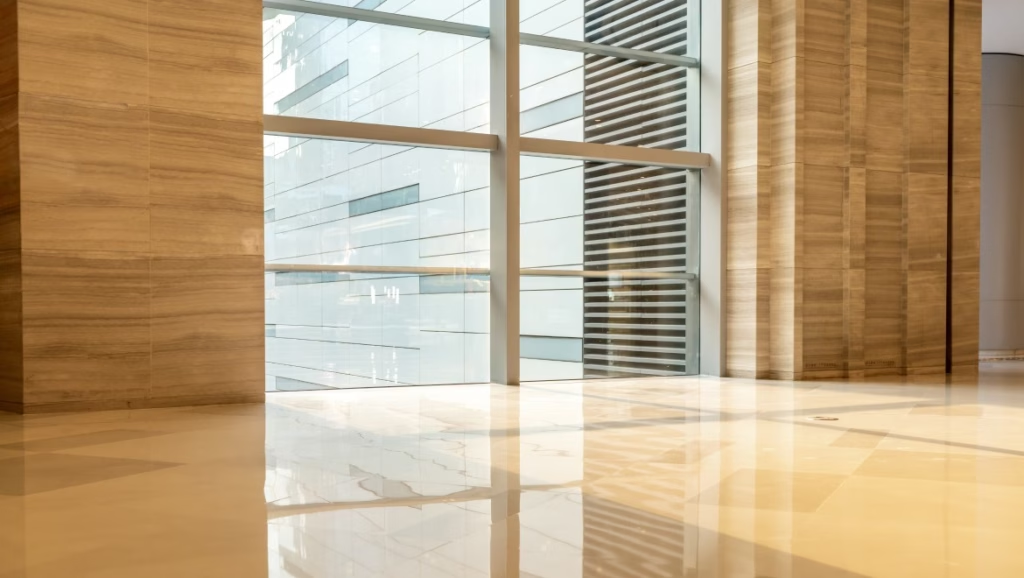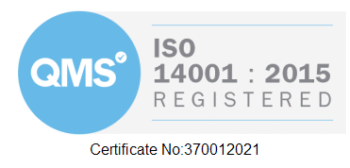How does fire rated glass work?

Originally published January 8, 2019. Updated September 24, 2025 for clarity, compliance, and the latest UK building regulations.
Fire-rated glass is a key component in fire safety design, helping to contain fire, smoke, and heat, while still sllowing visibility and natural light. But what makes it fire-resistant, and how does it actually work in practice?
In this article you’ll learn:
- What fire-rated glass is and how it differs from regular glass
- How it resists flames, heat, and radiant energy
- The materials and technology used in different types of fire glass
- How far ratings like E, EW, and EI are tested and certified
- Where and how fire glass shoulde be used to meet UK regulations
Whether you’re working on a residential, commercial, or public sector project, this guide will give you the technical confidence to choose the right fire glass with clarity and compliance in mind.
What is Fire-Rated Glass?
Fire-rated glass is a specialist type of safety glazing designed to withstand high temperatures, contain fire and smoke, and maintain its structure for a specific period, commonly 30, 60, 90, or 120 minutes.
Unlike standard toughened glass, which fails quickly under fire conditions, fire-rated glass is tested to remain stable and protective during a blaze. It’s essential in settings where both visibility and fire containment are required, such as corridors, stairwells, fire doors, and escape routes.
How Fire-Rated Glass Resists Flames and Heat
Fire-rated glass works by resisting three main dangers in a fire.
- Integrity (E)
The glass maintains a physical barrier against flames, smoke, and toxic gases. Even when exposed to extreme heat, it won’t break or collapse within the rated time period. - Insulation (EI)
Insulated fire glass reduces heat transfer to the protected side. This precents temperatures rising dangerously on the safe side, even when the fire is raging nearby. - Radiation Control (EW)
Some fire glass types alse limit radiant heat transmission, helping to prevent people or materials on the non-fire side from igniting or being harmed by infrared heat levels.
This trio of protection; E, EW, and EI forms the foundation of fire glass calssification in the UK and EU.
Materials and construction
Fire rated glass isn’t one-size-fits-all. Different applications require different constructions, such as:
| Type | Description | Typical Use |
|---|---|---|
| Monolithic Fire Glass | Single pane, fire-resistant ceramic or specially treated glass | Fire screens, basic integrity protection |
| Laminated Fire Glass | Multiple panes with intumescent or gel interlayers | High-insulation fire doors, partitions |
| Wired Glass | Steel mesh embedded in glass | Older or retro-style buildings (rare in modern spec) |
| Double-Glazed Fire Units | Fire glass combined with standard glass | Where insulation + fire rating + thermal performance is needed |
The right choice depends on where it is being installed, the required fire rating, and whether you need insulation, radiation control, or just basic integrity.
Fire Ratings: E, EW and EI Explained
Fire-rated glass is tested and classified under two main standards:
- BS 476 Part 22 (UK Standard)
- EN 13501-2 (European Standard)
Each product is rated based on how long it can withstand fire conditions, typically:
- 30 minutes
- 60 minutes
- 90 minutes
- 120 minutes
And by performance class:
| Class | What It Means |
|---|---|
| E | Integrity only (flame/smoke barrier) |
| EW | Integrity + limited radiation |
| EI | Integrity + full insulation |
Example: EI60 glass will prevent fire penetration and stop the transfer of heat for 60 minutes.
Always look for third-party certification (e.g., Certifire or IFC Certification) to ensure compliance.
Where and How Fire Glass Should Be Used
Fire-rated glass is a legal requirement in many parts of UK construction. You’ll often find it in:
- Fire doors (must be tested as part of a full door set)
- Internal partitions and walls in commercial buildings
- Lift lobbies, stairwells and escape corridors
- Residential high-rises
- Hospitals, shcools, offices, public buildings
Correct use of fire glass is often dictated by Approved document B of UK Building Regulations, which covers fire safety.
It’s vital that fire-rated glass is installed correctly, using compatible frames and fixings, otherwise, it won’t meet compliance, no matter how good the glass is.
Conclusion
Fire-rated glass is more than just tough, it’s a critical safety component, engineered to delay the spread of fire, protect lives, and buy vital time in an emergency.
By understanding how fire glass works, the different types available, and how ratings are applied, you can make more confident, compliant choices for your next project.
Need help choosing the right fire glass? Talk to our expert team today, or buy fire-rated glass online with your project specs.




